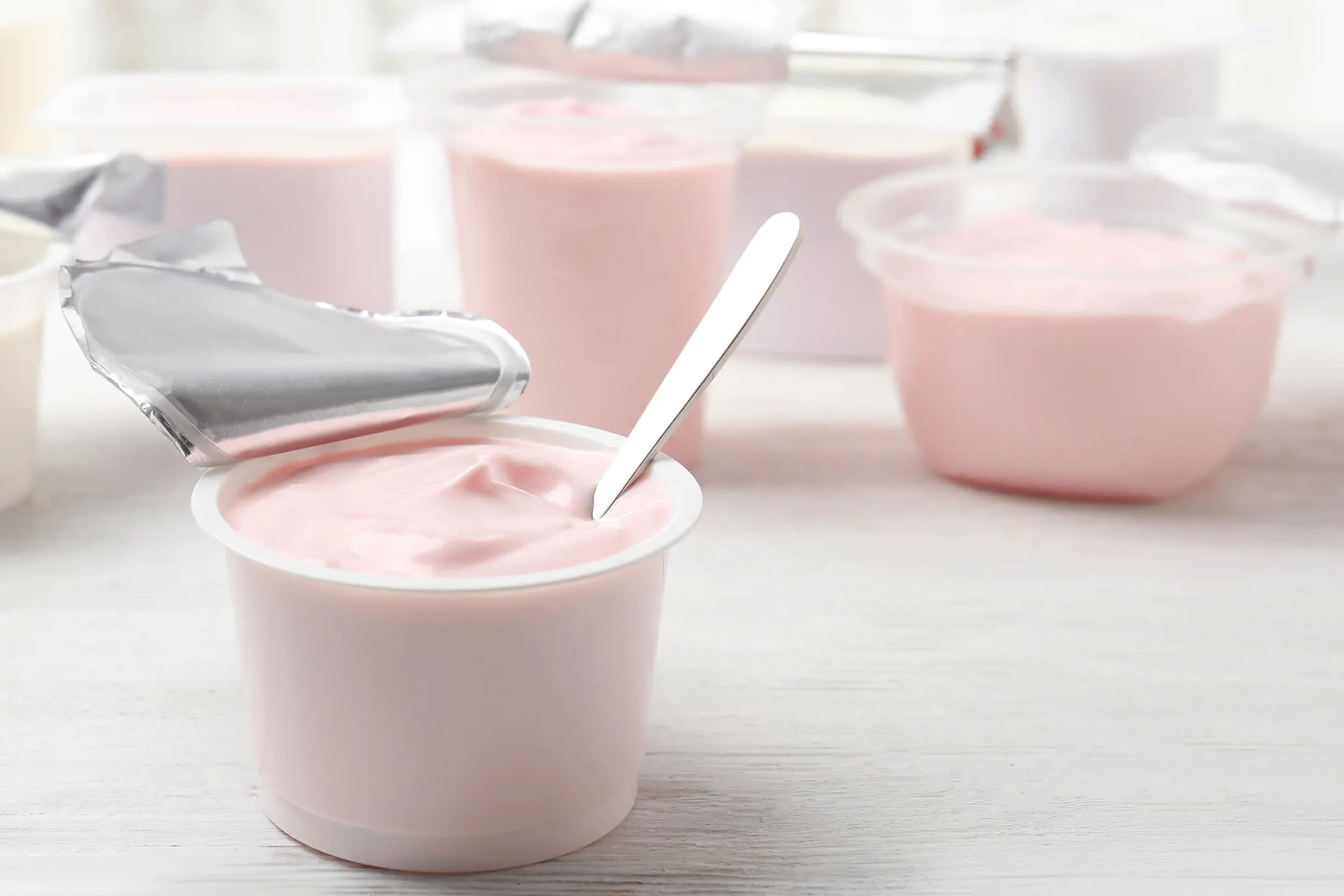
TECHNICAL ARTICLE
TECHNICAL ARTICLE
Over the past years, non-dairy whipping creams have become increasingly popular due to a number of benefits, such as reduced fat content, better cost-in-use calculations and better foam stability, which makes them easy to use and hence attractive to bakers and caterers. However, producing successful imitation whipping creams requires not only the right fats but the right combination of emulsifiers and stabilisers.
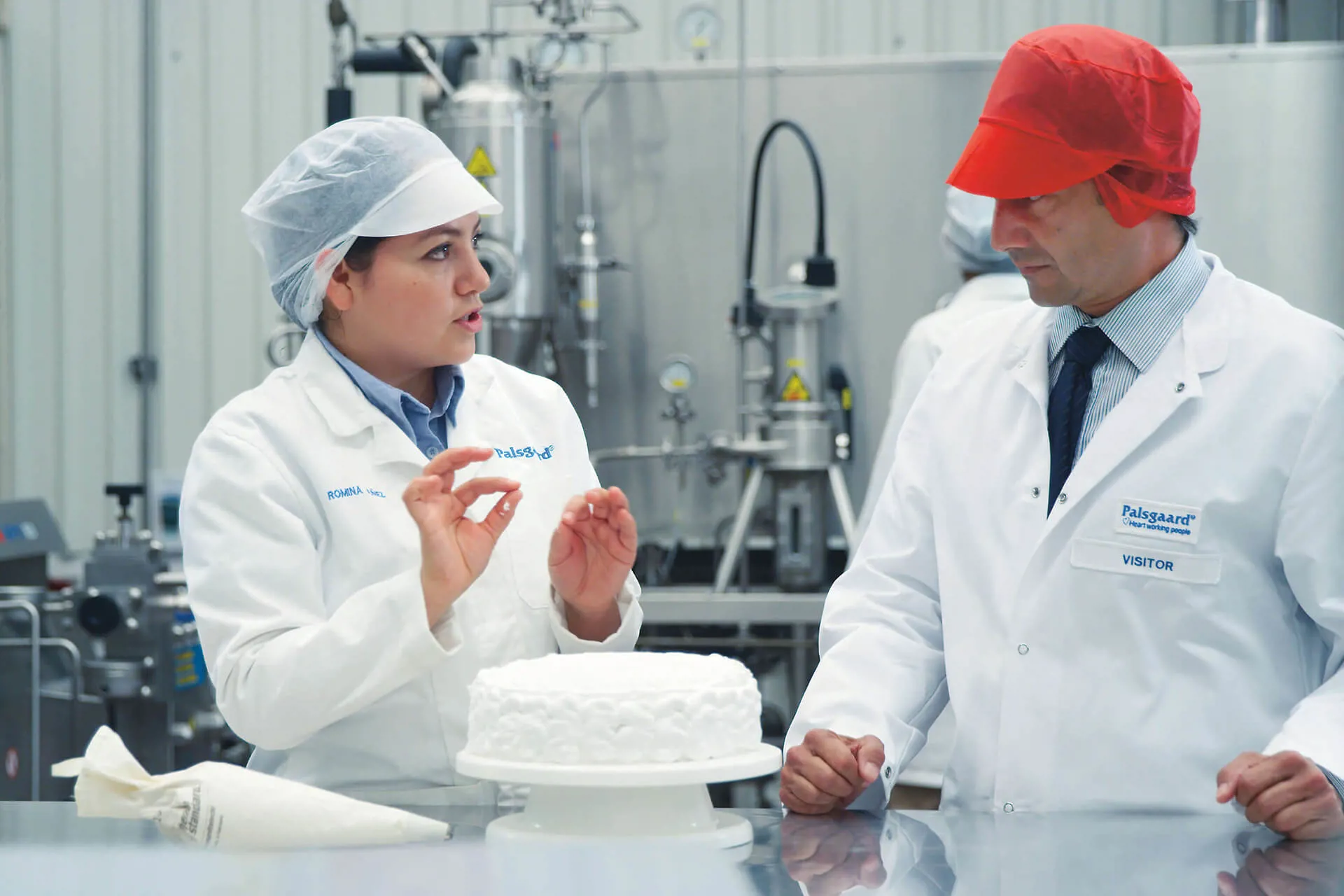
Whipped creams are widely used for cooking in households and in the catering sector, especially for desserts and cake decorations.
The whipped creams may be in the form of dairy whipping cream or imitation whipping cream. Dairy whipping cream with above 35% fat is the original product; however, nowadays creams based on vegetable fat are commonly seen. These vegetable fat-based products are called e.g. imitation creams, non-dairy creams, topping creams or confectionary creams.
The whippability of dairy whipping cream depends on the fat content as well as on the fat globule structure. The fat content should be above 35%, as dairy creams with lower fat contents do not whip into a stable foam. Further, the original fat globule structure should be maintained, meaning that the cream, in contradiction to most other dairy products, is not homogenised. If high shear is applied during processing the whippability is diminished, which can, however, be re-established by the application of emulsifiers.
There are several advantages of using non-dairy whipping cream compared to dairy whipping cream:
Imitation whipping cream is a liquid oil in water emulsion, which is whipped into a stable foam. The foam is air bubbles dispersed in the serum phase stabilized by destabilized fat.
Imitation whipping cream normally contains vegetable fat, milk proteins, sweeteners, water and emulsifiers and stabilisers. The milk protein is often sodium caseinate as whey proteins tend to induce agglomeration in the liquid cream during storage. As the fatty acid composition of the vegetable fat influence the viscosity of the liquid cream as well as the foam structure, firmness end eating properties, the manufacturer must ensure that the fat chosen is suitable for the application. Likewise, the choice of emulsifier and stabiliser has great importance for the quality of the cream. Emulsifiers and stabilisers are important in the formation of a stable liquid emulsion and in the whipping process for the formation of a stable foam with a high overrun. This will be described in more detail below.
Non-dairy whipping cream is commonly produced by means of the UHT-process as this ensures a long shelf life of the product. With the right choice of emulsifiers and stabilisers, the cream may be stored at room temperature. The design of the UHT-plant should be downstream with 2-stage homogenisation ensuring the formation of a stable emulsion.

Emulsifiers are surface-active ingredients due to their hydrophilic-lipophilic properties. In competition with the proteins, it locates in the interface between the oil droplets and the serum phase, or in the case of foam, in the air serum interface. Hereby it lowers the interfacial tension between the two phases. Proteins and emulsifiers also interact altering the fat globule membrane and its emulsion stability and resistance to mechanical interactions. The effect depends on the hydrophilic and lipophilic groups as well as the ionic properties.
The main functionality of emulsifiers in imitation cream is to destabilize the fat globule membrane covering the fat globules formed during the homogenisation of the cream. During storage of the liquid cream, the proteins covering the fat globule are displaced by emulsifiers. Hereby agglomeration and partial coalescence of the fat globules are facilitated. This is important for the structure formation and air cell distribution formed during whipping. Further emulsifiers are important for the stability of the formed air cells i.e. the strength of the air cell walls.
For imitation whipping cream there is a conflict between the formation of a stable liquid emulsion with good storage stability and an easy whippable emulsion with good foam stability. During whipping the fat globules need to be broken and release fat which then agglomerates and coats the air cells and thereby building a stable foam skeleton.
In the production of imitation whipping cream, several types of emulsifiers are used in combination: Lactic acid esters of mono- and diglycerides (Lactem) improve the whippability and overrun of the product due to its α-tending properties. α-tending emulsifiers strengthen the foam skeleton due to increased fat agglomeration. Lactem is often used in combination with mono- and diglycerides. Mono- and diglycerides are added for their destabilizing effect on the emulsion improving the foam stiffness and stability, an effect increasing with the increased iodine value of the emulsifier. The combination of the high-fat content in the cream and the fat destabilizing effect of the added mono- and diglycerides, leads to increased viscosity in the cream, sometimes to an extent so that the liquid cream is becoming a paste which isn’t attractive for the consumer.
This viscosity increase may be inhibited by adding the more polar emulsifier lecithin, or an anionic emulsifier like diacetyl tartaric acid esters of mono- and diglycerides (Datem) or sodium stearolyl lactylate (SSL) acting as strong oil in water emulsifiers. They interact with proteins in the interphase by hydrophobic and electrostatic interactions forming an emulsifier/protein film. Hereby the negative net charge of the fat globules is increased and the emulsion stability increased. The increased emulsion stability counteracts the whipping properties, which is why a balance in the use of different emulsifiers is important.
Emulsifiers are used in combination with stabilisers. Stabilisers are hydrocolloids which bind and immobilise water. In non-dairy cream, stabilisers are working in the water phase improving the emulsion stability in the liquid cream, improving the foam stiffness and preventing drainage in the whipped cream. By combining the emulsifiers and stabilisers in different levels, imitation whipping creams with good piping definition but different body and mouthfeel can be produced.
At Palsgaard’s application lab in Denmark creams, we produced non-dairy whipping creams according to the following composition:
Both of the mentioned emulsifier blends include Lactem as the whipping agent. The cream was produced by means of UHT. After whipping in a Hobart whisper the hardness was analysed in a TaXT2 texture analyzer.
From Figure 1 it can be seen that simply by changing the composition of the emulsifier it is possible to influence the hardness of the foam giving the hardness/softness needed by the application or desired by the customers. This is even at the same overrun in the cream as demonstrated in Figure 2.
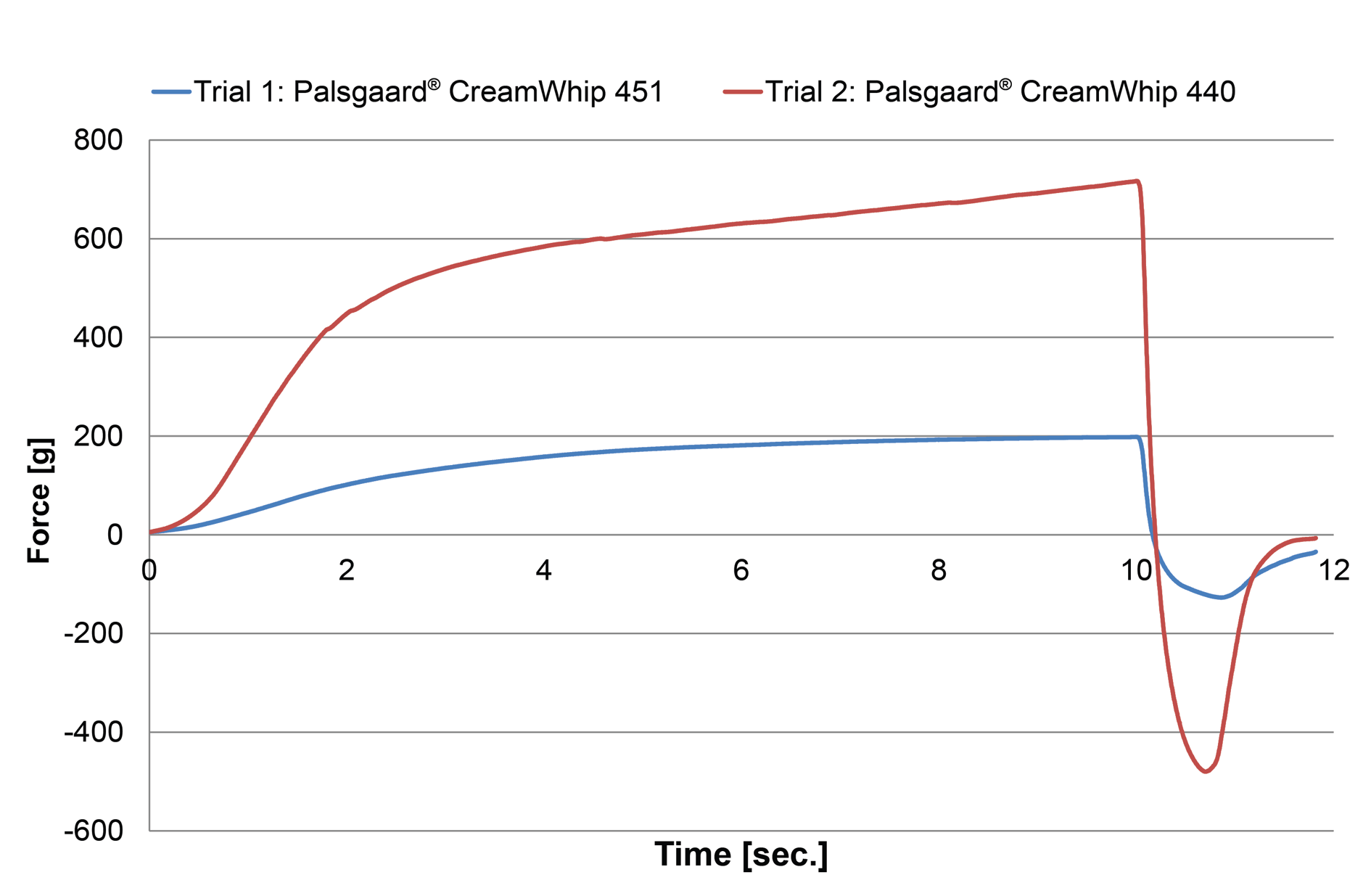

From Figure 2 it is also evident that imitation creams with Palsgaard® CreamWhip 440 and Palsgaard®CreamWhip 451 have a good stability against overwhipping. After the maximum overrun is reached continuous whipping for 30 to 60 seconds won’t influence the overrun. This is an important parameter for employees in catering and bakeries as they are handling more tasks at the same time. Here flexibility is a must.
It’s important also to notice that by changing the emulsifier composition e.g. by addition of polysorbate (PS) or mono- and diglycerides (MDG) it is possible to obtain the higher overrun and still have a good foam structure and stability – see Figures 3 and 4.

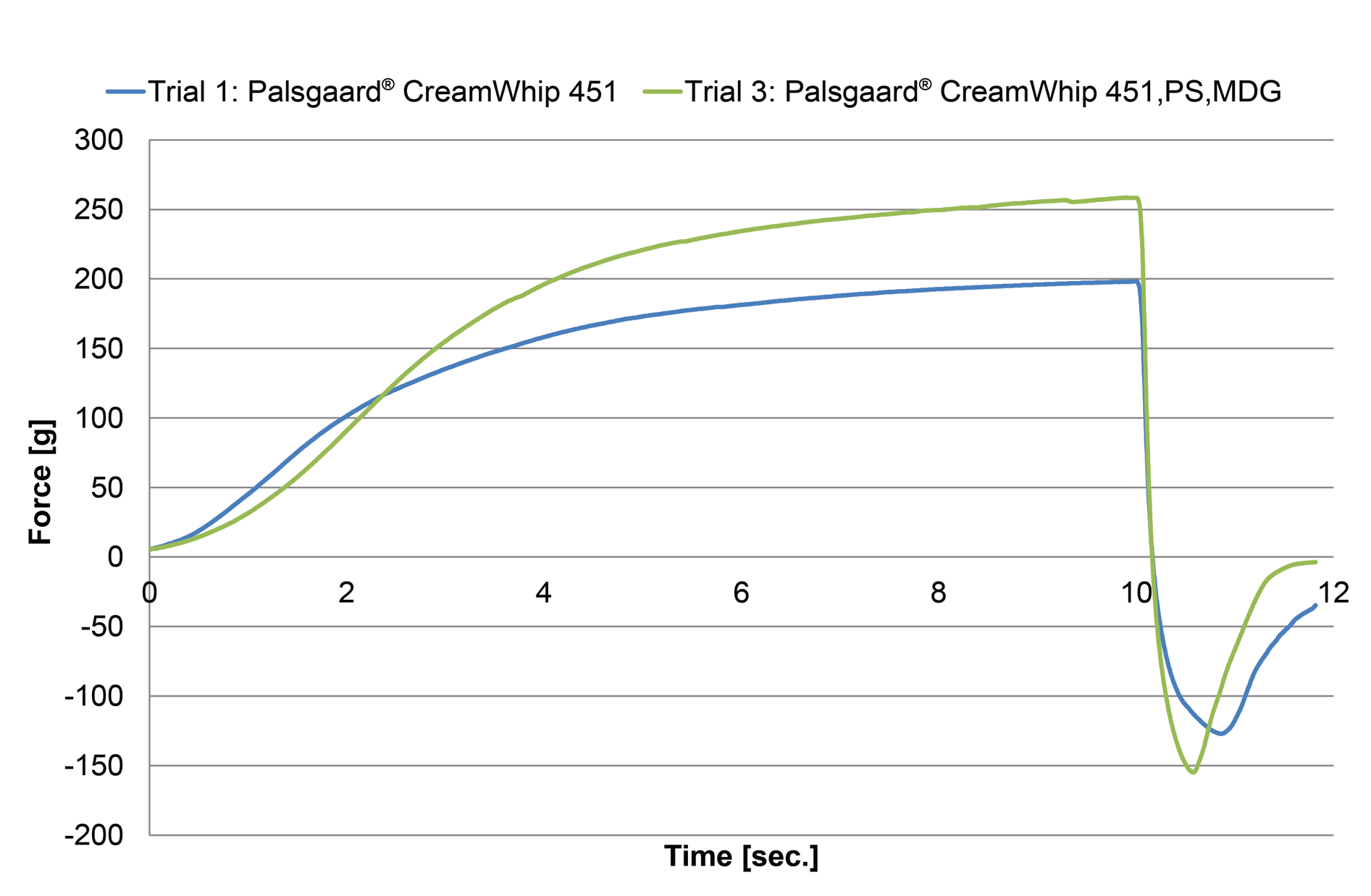
Palsgaard® CreamWhip 440 and Palsgaard® CreamWhip 451 are applicable in imitation creams with protein in the water phase. However, sometimes a protein-free product is requested either for nutritional or technical reasons, one advantage being that protein-free imitation cream is pH stable. It is also suitable for vegans as it is 100% plant-based.
In confectionery applications, fruit or fruit-flavoured ingredients are often mixed into the cream. If proteins are present the risk of denaturation of the proteins is present resulting in a separated product with texture and sensory properties which will not be accepted by the consumers.
As the protein, when available, is an important functional ingredient in the emulsion formation and structure building, the types of emulsifiers and stabilisers have to be modified and other ingredients added in the production of protein-free alternatives to obtain the same overrun and stability in the liquid cream as well as in the whipped product.
Palsgaard is now offering a solution for protein-free whipping cream called Palsgaard® CreamWhip 459. This combined emulsifier and stabiliser solution makes it easy for the manufacturer to produce a high-quality protein-free, vegan UHT non-dairy whipping cream. The emulsifier uses polyglycerol esters of fatty acid (PGE) as the main emulsifier. PGE is a hydrophilic emulsifier improving whippability and foam stability of emulsions.
As shown above, emulsifiers and stabilisers play a big role in creating non-dairy whipping creams with the qualities demanded by bakers, caterers and the end consumer. Should you like to know more about how Palsgaard can assist you in finding the emulsifier/stabiliser combination suited especially for your needs please contact your local Palsgaard office.
If you're interested in significantly reducing costs without affecting the quality of your non-dairy creams and exploring new market opportunities with delicious creams down to 12% fat, you can find out more about our new solutions here.

TECHNICAL ARTICLE

TECHNICAL ARTICLE
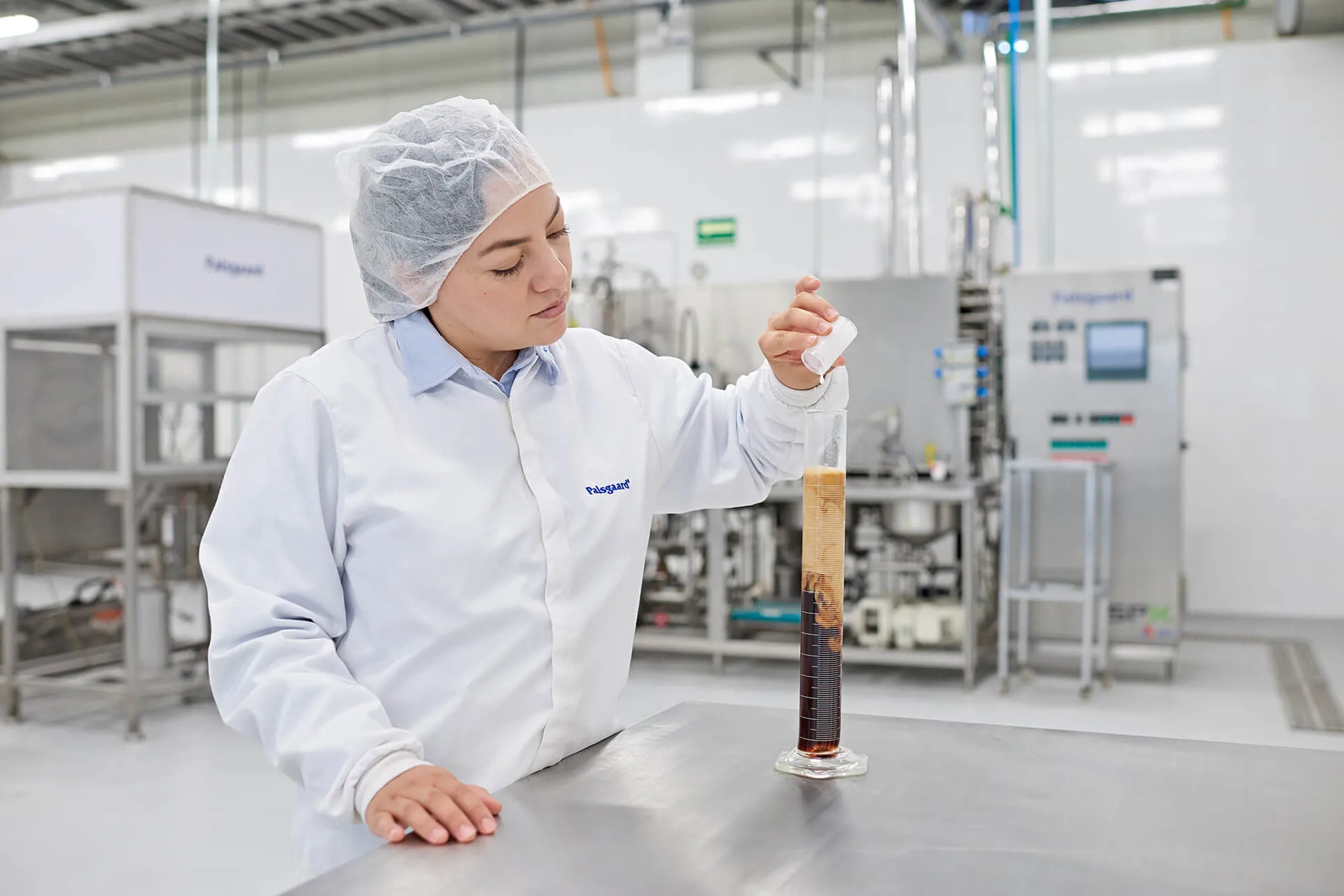
TECHNICAL ARTICLE
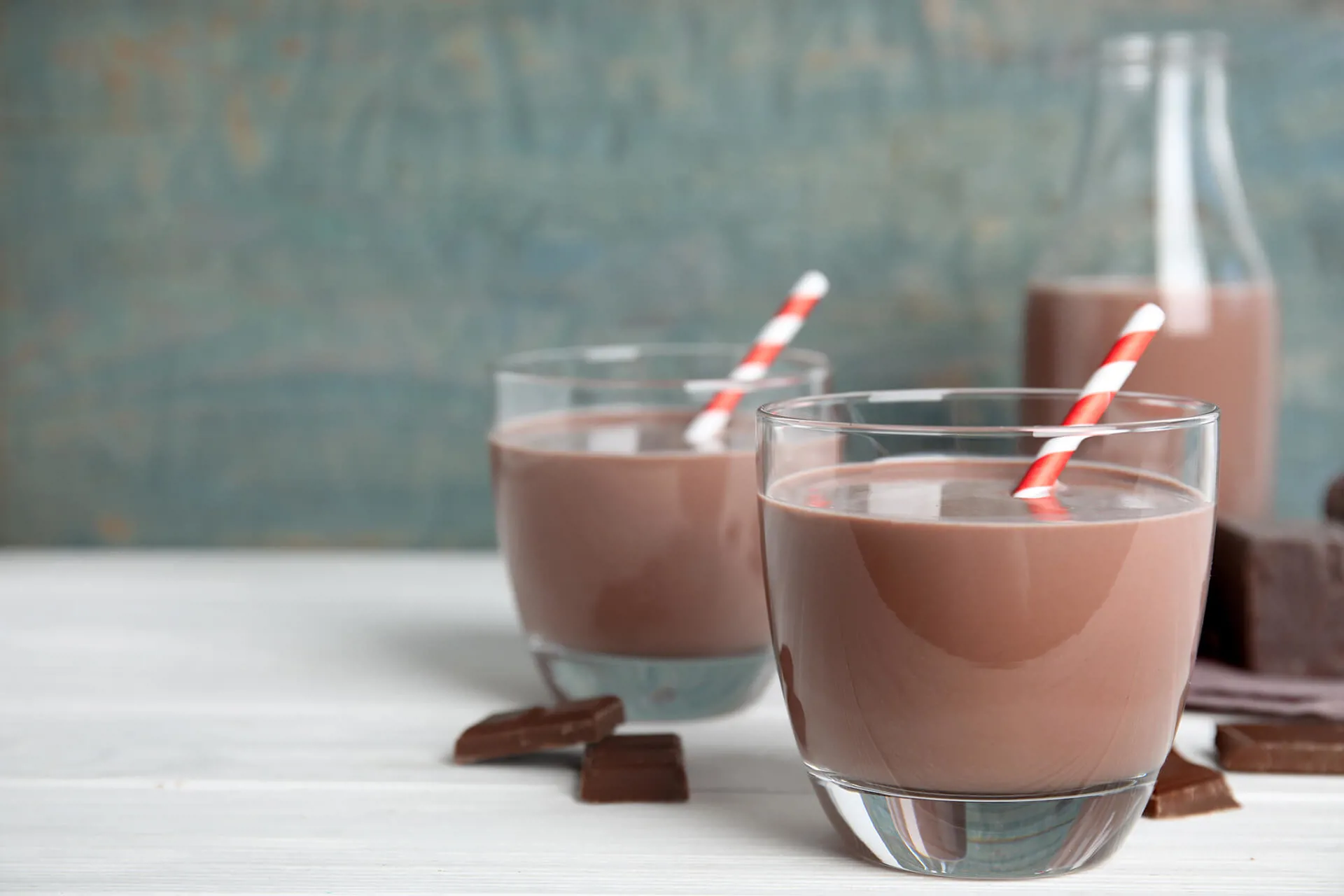
TECHNICAL ARTICLE
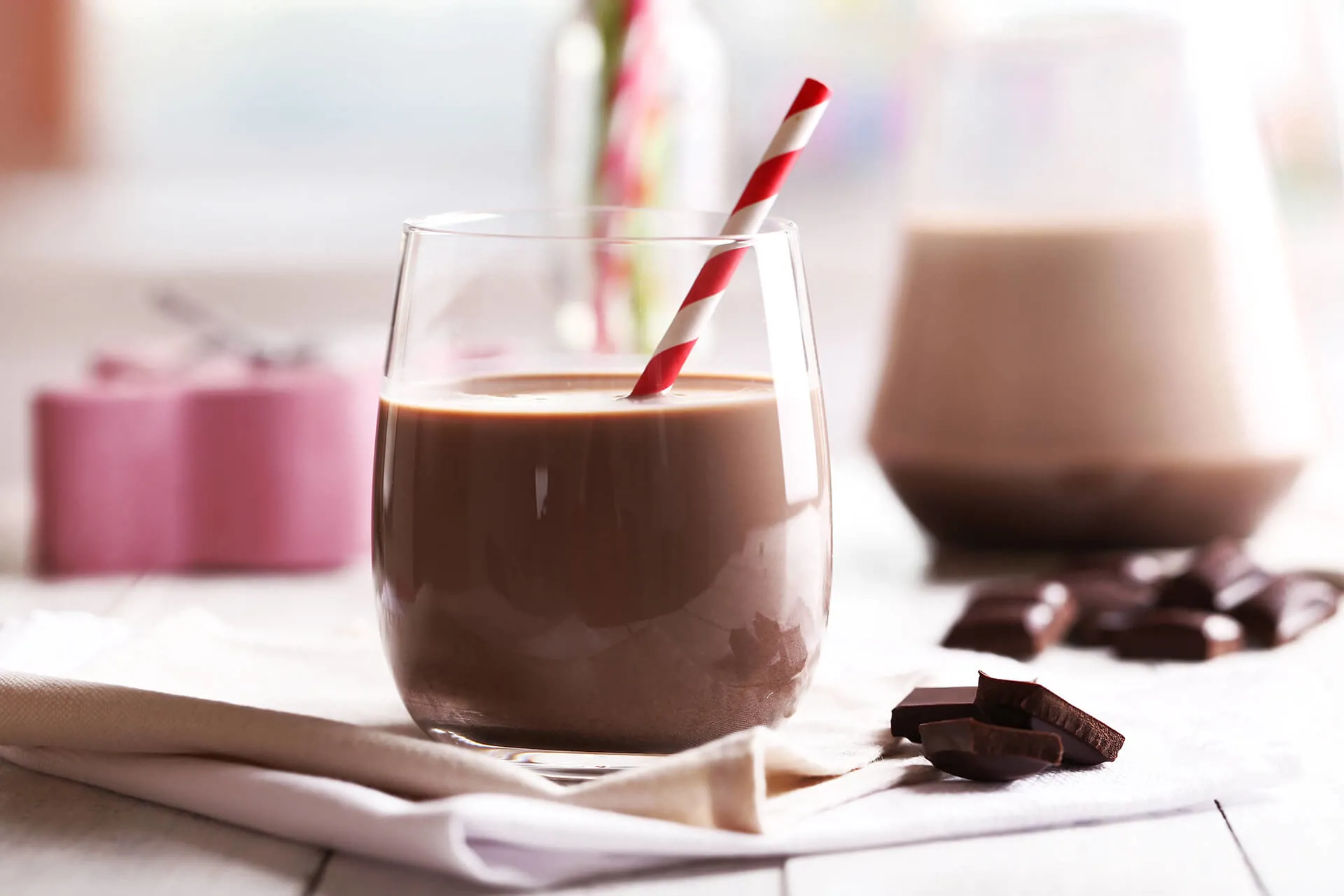
TECHNICAL ARTICLE